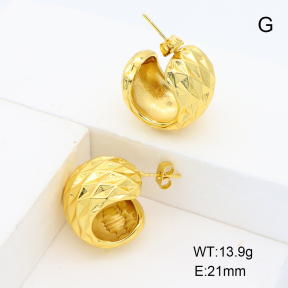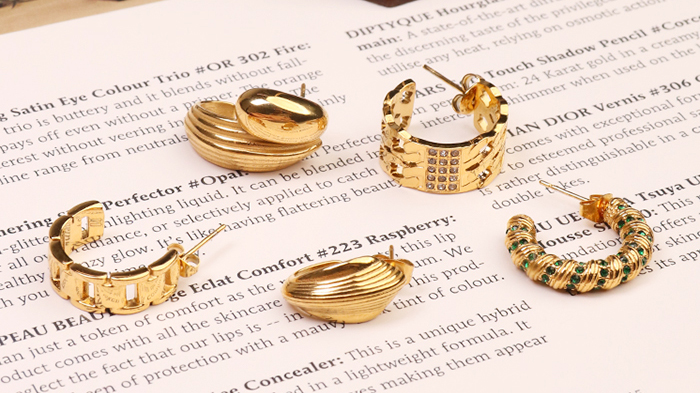A Comparison of Excellence: Titanium vs. Stainless Steel Jewelry in Stainless Steel Chain Jewelry Making
.jpg?x-oss-process=style/size_100_100)
Introduction
Jewelry has been an integral part of human adornment and self-expression for centuries, evolving in materials, styles, and designs. Among the materials that have captured the attention of both jewelry artisans and consumers, titanium vs stainless steel jewelry stand out as durable and versatile options. In this essay, we will explore the unique attributes of titanium and stainless steel in the context of jewelry making, with a particular focus on stainless steel chain jewelry. By comparing titanium and stainless steel jewelry, we aim to shed light on the qualities that make each of them exceptional in the world of wearable art.
I. Titanium vs. Stainless Steel Jewelry: A Comparative Analysis
Durability and Strength:
Titanium: Titanium is known for its incredible strength and resistance to corrosion, making it an excellent choice for jewelry that needs to withstand daily wear and exposure to the elements.
Stainless Steel: Stainless steel, too, boasts impressive durability and resilience. It is highly resistant to tarnish, rust, and corrosion, making it a reliable material for long-lasting jewelry.
Weight:
Titanium: Titanium is remarkably lightweight, making it an ideal option for those who prefer jewelry that feels almost weightless when worn.
Stainless Steel: Stainless steel, while not as lightweight as titanium, is still relatively light compared to other metals like gold or platinum.
Hypoallergenic Properties:
Titanium: Titanium is hypoallergenic, which means it is unlikely to cause skin irritations or allergic reactions, making it suitable for individuals with sensitive skin.
Stainless Steel: High-quality stainless steel is also hypoallergenic, as it typically contains no nickel, a common allergen found in many other metals.
Appearance:
Titanium: Titanium has a distinctive matte finish that gives it a unique, modern appearance. It is often used to create minimalist and contemporary jewelry designs.
Stainless Steel: Stainless steel jewelry can feature various finishes, including polished, brushed, or even black ion-plated. This versatility allows for a wide range of design possibilities, from classic to edgy.
II. Stainless Steel Chain Jewelry Making
Chain jewelry has been a staple in the world of fashion and accessories for centuries. Stainless steel chain jewelry making has gained popularity due to the unique properties of stainless steel:
Versatility:
Stainless steel chain jewelry can take on various forms, from delicate and fine chains to bold and chunky designs. This versatility allows jewelry makers to cater to different tastes and styles.
Durability:
Stainless steel chains are known for their robustness and resistance to wear and tear. They can withstand the rigors of daily wear without losing their structural integrity.
Affordability:
Stainless steel chain jewelry is more budget-friendly than many other metals like gold or silver, making it accessible to a broader range of consumers.
Low Maintenance:
Stainless steel chains are relatively low-maintenance, requiring minimal care to maintain their luster. Regular cleaning with a soft cloth is often sufficient to keep them looking pristine.
III. Choosing Between Titanium and Stainless Steel Chain Jewelry
The choice between titanium and stainless steel chain jewelry ultimately comes down to personal preferences and specific needs. Here are some factors to consider when making your decision:
Style: Consider the style of jewelry you prefer. Titanium's matte finish may appeal to those who favor minimalist and contemporary designs, while stainless steel's versatility allows for a broader range of styles.
Budget: Titanium jewelry can be more expensive than stainless steel due to its unique properties. If you are working within a budget, stainless steel may be the more practical choice.
Allergies: If you have sensitive skin or nickel allergies, both titanium and stainless steel are hypoallergenic options. However, it's essential to ensure that the specific jewelry piece you choose is made from high-quality, nickel-free materials.
Purpose: Consider the intended use of the jewelry. For everyday wear or pieces that will be exposed to moisture, stainless steel's corrosion resistance may be advantageous. Titanium's lightweight nature may be preferable for those who want barely noticeable jewelry.
Conclusion
Titanium and stainless steel jewelry offer unique qualities and advantages, making them both valued choices in the world of wearable art. When it comes to stainless steel chain jewelry, stainless steel's versatility, durability, and affordability make it a popular choice among jewelry makers and consumers. Titanium, on the other hand, stands out for its exceptional strength, lightweight feel, and distinctive matte finish.
Ultimately, the choice between titanium and stainless steel chain jewelry should align with your personal style, budget, and specific needs. Whether you opt for the sleek, modern allure of titanium or the enduring appeal of stainless steel, both materials have a place in the ever-evolving world of jewelry design, offering beauty and longevity to those who wear and cherish these exquisite creations.






